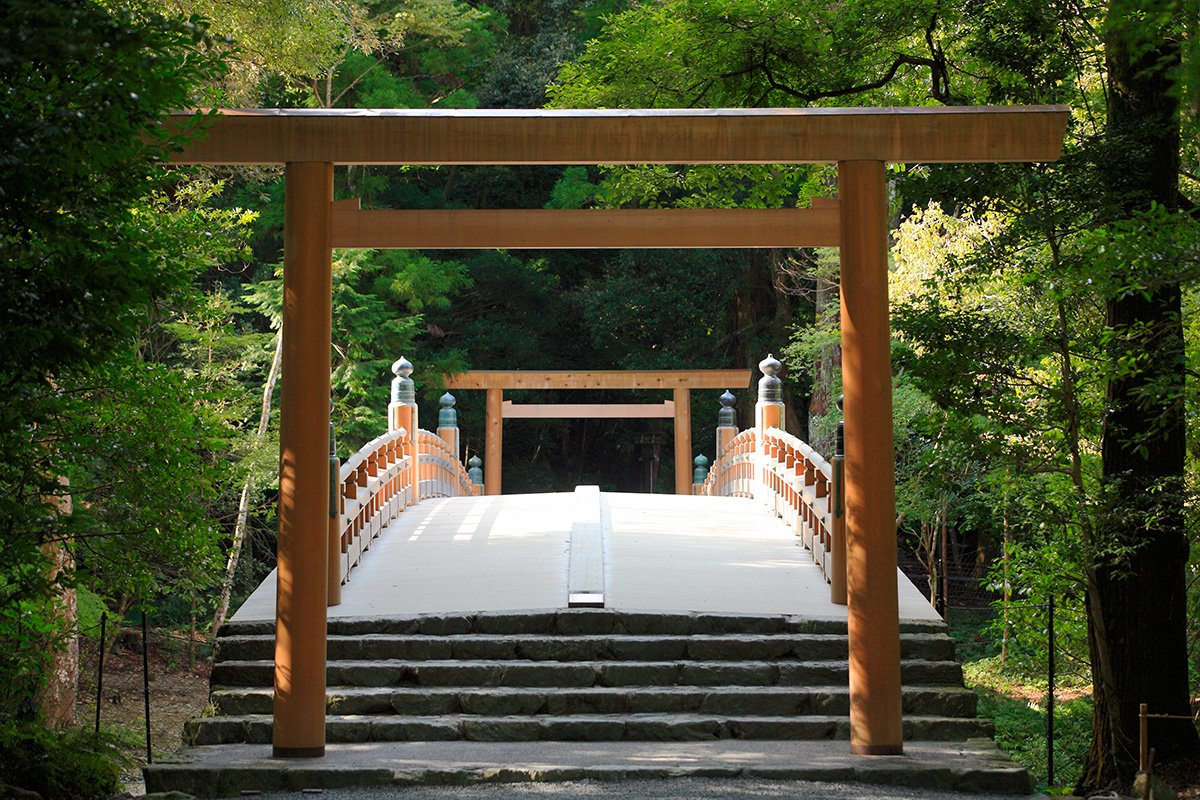The shrine is popular as a power spot, but even Japanese people living in the country are surprisingly unaware of its connection to Japanese culture.
Also, there may be people who visit the shrine on New Year's Day or other occasions but do not know what god is enshrined there.
In this article, we would like to introduce the specific definition of a shrine and the various gods that are actually enshrined there, while thinking together with you about the relationship between Japanese culture and shrines.
What are shrines, which are deeply connected to Japanese culture?

A shrine is a facility that enshrines the gods of Shinto, a religion native to Japan.
The fact that there are over 100,000 shrines across the country shows how close the Japanese people felt to the gods.
Typical shrine structure
Shrines serve as places of worship.
For this reason, the grounds of a typical shrine include a torii gate at the entrance, a path to the shrine, and a temizuya (water purification fountain) where you can purify your hands.The main hall at the very back is an important place where the gods reside, so it is kept out of sight.
The relationship between shrines and Japanese culture
The most important reason why Japanese people go to shrines is to express their daily gratitude to the gods.
Even if you are not a Shinto convert, many people visit shrines for the following events and customs.
- first visit of the year to a shrine
- wedding
- Shichi-Go-San etc.
In addition to being a place where people gather to pray for the safety of their families, good health, and success in exams, shrines also have an aspect of being power spots. For this reason, while shrines in this country are the homes of the gods, they are also deeply rooted in Japanese culture as a place of spiritual support for people.
The various gods enshrined in the shrine

To introduce the deep connection between shrines and Japanese culture and the Japanese people, let's take a look at the characteristics of the diverse gods actually enshrined there.
Gods of Heaven and Earth
The gods of heaven and earth are the indigenous gods, the Kunitsukami, and the Amatsukami, the heavenly gods who live in Takamagahara.
The representative of the Kunitsukami is Okuninushi-no-Mikoto, and the foremost of the Amatsukami is Amaterasu-Omikami, and in addition to these two, countless other gods are enshrined throughout Japan. Ise Grand Shrine, which enshrines Amaterasu-Omikami, the supreme god of the eight million gods, is given the name Daijingu.
Ancestral deities of the imperial family and clans
Deities such as Amaterasu Omikami, enshrined at Ise Grand Shrine, are also considered the ancestral deities of the Imperial family. Amanokoyane no Mikoto is also the ancestral deity of the famous Fujiwara clan. Former emperors such as Emperor Kanmu and Emperor Komei are enshrined at Heian Shrine, a popular power spot, and Emperor Ojin is enshrined at Usa Shrine in Oita Prefecture.
Spirits of great men
The shrine also enshrines many great people who were active in ancient times, such as:
- Tokugawa Ieyasu
- Sakuma Shozan
- Togo Heihachiro, etc.
Among great people, there are those who are enshrined as gods and those who are not. There are no clear rules or exact regulations regarding this. It is generally said that it depends on the person who built the shrine and the era.
Animals and nature
At shrines, mountains such as Mount Fuji, forests, waterfalls, and rocks are often deified.
For example, at the Fushimi Inari Shrine in Kyoto Prefecture, creatures with mysterious powers called kenzoku are enshrined as messengers of the gods. Contrary to common misconception, they are not foxes.
Other imaginary animals such as dragons are also considered to be auspicious symbols.
Foreign God
Japanese shrines are known for their open-mindedness in accepting gods who have come from overseas.
For example, the Indian gods Dakini, Gozu Tenno, and the azimuth gods, which are often confused with Inari faith, are famous foreign gods. In addition, the fact that many gods other than Shinto, such as those from Onmyodo and Taoism, are enshrined is also one of the reasons why Japanese shrines are visited by a diverse range of people, including foreigners.
vengeful spirit
Vengeful spirits, feared by many people, are also enshrined at some shrines. This is called the belief in spirits.
In Japan, people enshrine vengeful spirits in shrines to appease their anger and ward off curses. Through this belief, vengeful spirits are thought to become gods who bring peace to people.
Representative figures in the belief in vengeful spirits are Prince Sawara, who died in rage for a crime he did not commit, and Sugawara no Michizane of Dazaifu, who died an untimely death. They are both vengeful spirits and great men. Tenmangu Shrine, which enshrines Sugawara no Michizane, is a shrine beloved by students and others as the god of learning.
summary
Shrines are places where a wide variety of gods are enshrined, including not only the gods of Shinto, Japan's indigenous religion, but also the ancestral gods of ancestors and emperors, as well as vengeful spirits.
Shrines also serve as places where people can convey their daily gratitude and wishes to the gods, so many people visit them throughout the year for various prayers, New Year's visits, weddings, and other annual events.
Shrines, surrounded by abundant nature and trees, also have the aspect of being healing and power spots. They are spots that anyone can easily visit, so why not start by visiting a nearby shrine and experience the connection between shrines and Japanese culture?
This article has been partially re-edited by KARUTA from an article originally published on "Nihongo Biyori."
Any unauthorized reproduction or use of the contents, text, images, illustrations, etc. of this website is strictly prohibited.
